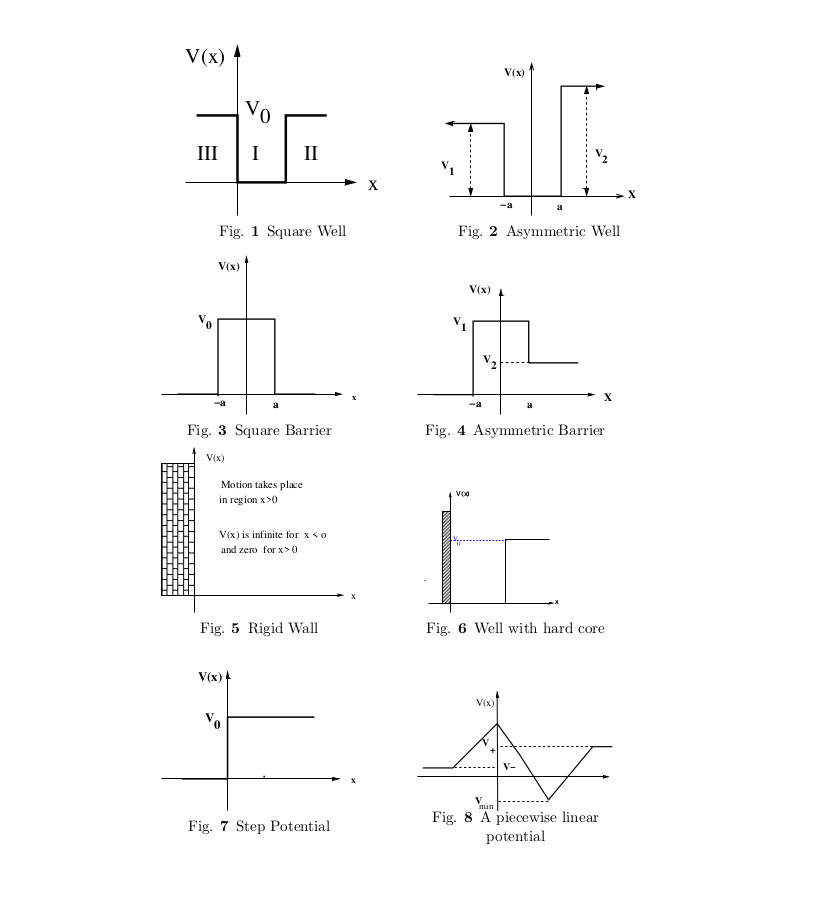Category:
$\newcommand{\sech}{\rm sech}$
We give several examples to explain how to obain the nature of energy spectrum without solving the problem completely.
The nature of energy spectrum can be classified into three following classes.
- [Class 1] Discrete energy levels
- [Class 2] Continuous and doubly degenerate levels
- [Class 3]Continuous and non degenerate levels
We will two give examples each of potentials with specified energy levels of specified classes. is described.
- Potentials having only class 1 levels: Harmonic oscillator and Infinite well
- Potentials having only class 2 levels: Square barrier, Fig. 3. and \(V(x)= g\, \sech^2 \alpha x, g>0\),
- Potentials having only class 3 energy states: The exponential potential \(V(x)= g e^{\alpha x}, \alpha >0, g>0\) and Rigid wall at \(x=0\)
- Potentials having class 1 and class 2 levels, but not having class 3 levels: Square well, Fig. 1 and \(V(x)=-g\, \sech^2\alpha x , g>0\)
- Potentials having class 1 and class 3 levels, but not of class 2: Square well with a hard core, Fig. 6 and Morse potential, \(V(x) =A (e^{-2ax}-2e^{-ax}) \)
- Potentials having class 2 and class 3 levels but with no class 1 level: Step potential , Fig. 7 and Asymmetric barrier, Fig. 4
- Potential having all three types of states: Two examples are sketched in Fig. 2 and Fig 8.

Exclude node summary :
n
Exclude node links:
0
700
0






 ||Message]
||Message]
